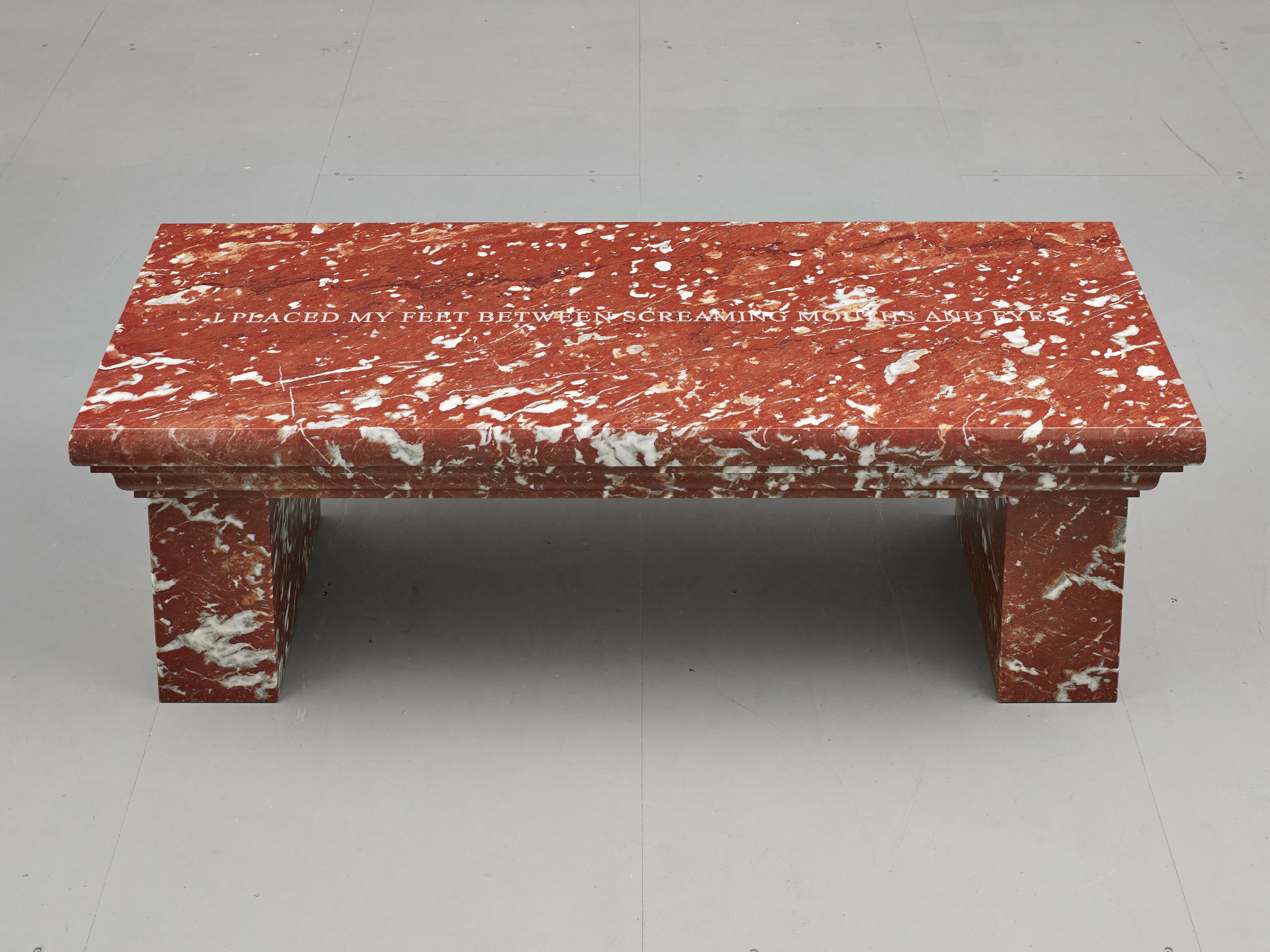Jenny Holzer

Gallery
Sculpture
Painting
Rooms
About
Although from a younger generation than Lawrence Weiner, Jenny Holzer's use of language has made her one of the pioneers of conceptual art. Working on both a small and, more recently, large scale, her use of new technologies and subtle understanding of architectural and even landscape spaces shows her to be one of the most most significant, uncompromising and truth-seeking artists of our time.
Everyone can access the meaning of text but not everyone knows that it can be a sculptural experience. Born in 1950, Holzer's early texts - short, pithy, printed statements - appeared on walls, the sides of telephone booths, as mail shots, on T-shirts and baseball caps. She began using Light Emitting Diodes (LEDs) in public spaces and in the 1990s began to uses Xenon projections which can reach onto buildings from a distance. Over the years, her writings have become a social and psychological portrait of our time. Her projects have included the American Pavilion at the 44th Venice Biennale, where she won the main prize.
Holzer worked with ARTIST ROOMS to create a group of works which shows some of the recurring themes she has worked on, such as violence, power, war, sex and money. She also made available two paintings from her 'PROTECT PROTECT' series in which she presents formerly classified material relating to the Iraq War containing battle plans and the testimonies of soldiers and detainees. The towering 'BLUE PURPLE TILT' consists of seven double-sided vertical LED displays and is programmed with a selection of messages from several of Holzer's early text series.
Tate and the National Galleries of Scotland would like to recognise the artist's generous donation of works to the ARTIST ROOMS collection.
Films
ARTIST ROOMS: Jenny Holzer
This film was made at the time of an ARTIST ROOM of Jenny Holzer's work at the Lightbox, Woking.




















